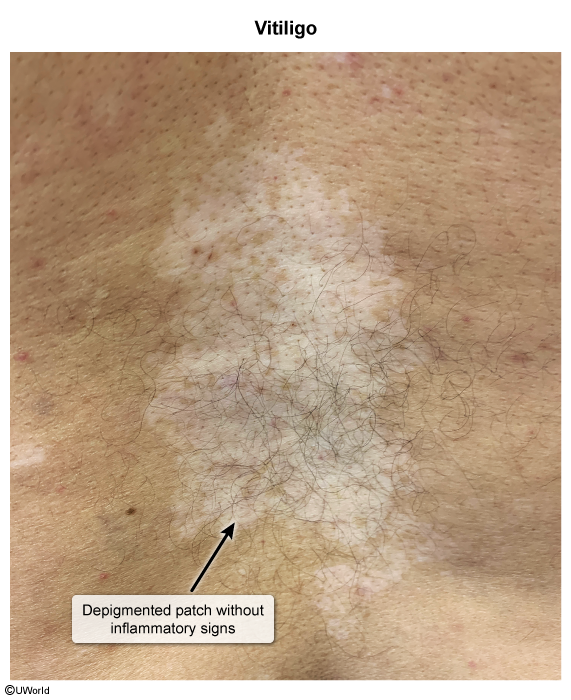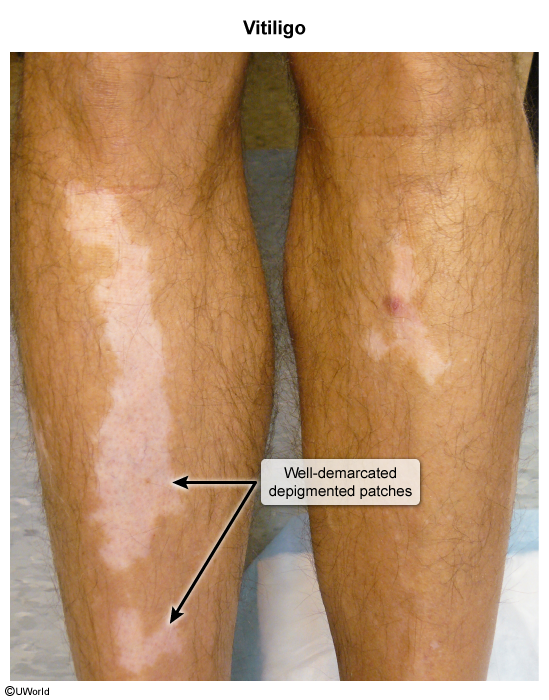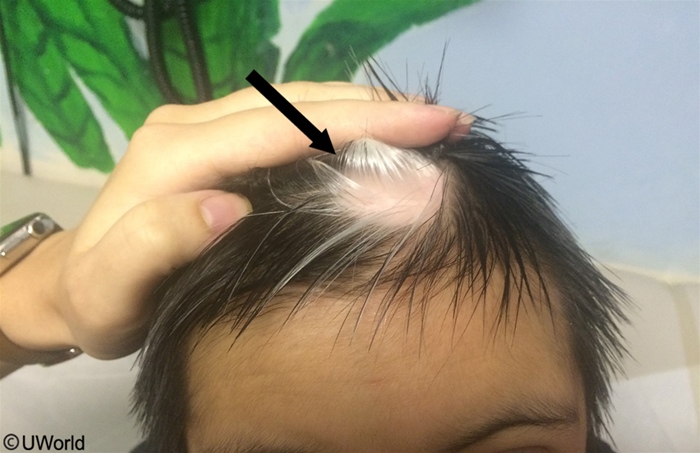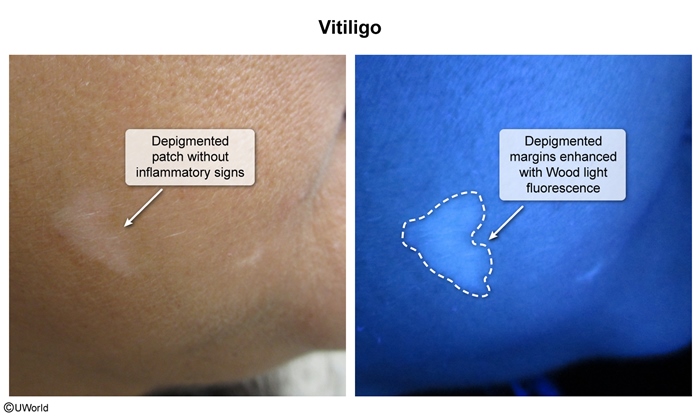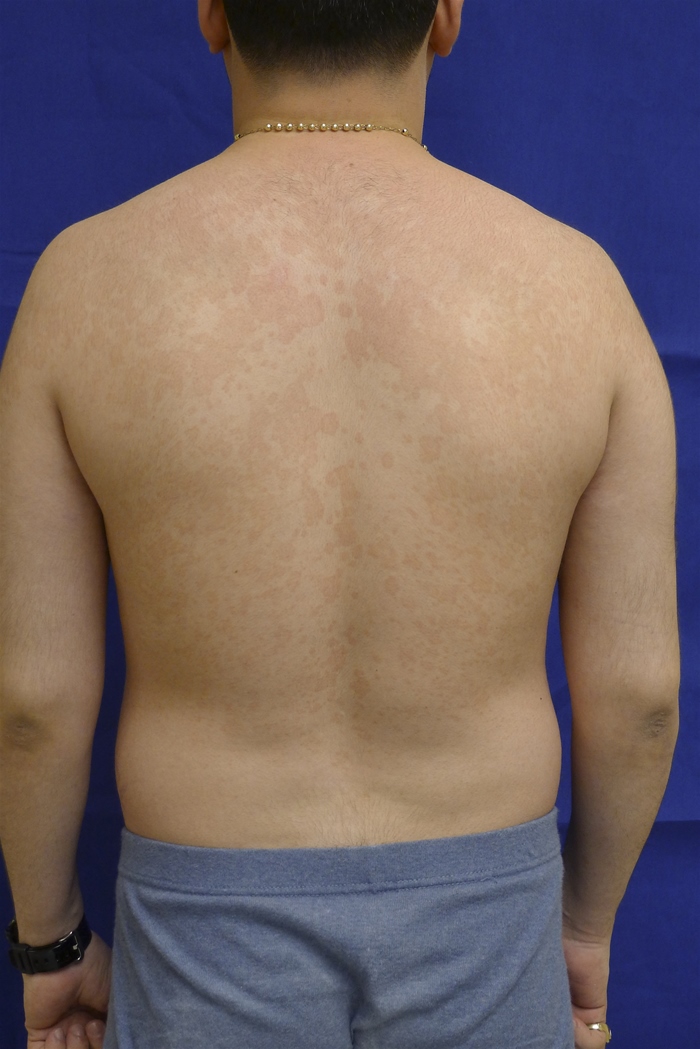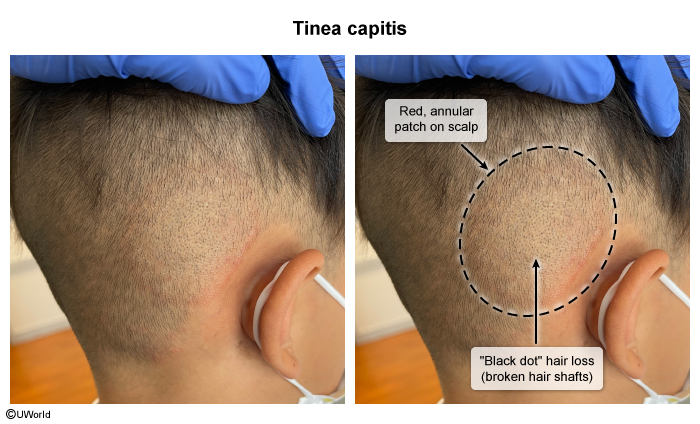Vitiligo
Article Sections
Introduction
Vitiligo is an acquired depigmentation disorder characterized by the progressive loss of melanocytes, leading to focal, well-demarcated patches of completely depigmented skin and/or hair. The prevalence is similar in all racial and ethnic groups; it can occur in all ages but is most common at age <30. The condition has significant psychosocial implications.
Pathophysiology
The exact pathogenesis of vitiligo likely involves a combination of genetic and environmental factors (eg, sunburn, trauma) that result in a loss of melanocytes. An autoimmune mechanism leading to melanocyte destruction is likely, supported by the presence of melanocyte-specific autoantibodies and a greater prevalence of other autoimmune diseases (eg, autoimmune thyroid disease, alopecia areata) in patients with vitiligo. Other possible contributing factors include neurohumoral toxicity specific for melanocytes and melanocytic self-destruction (eg, production of toxic intermediates during melanin synthesis).
Continue Learning with UWorld
Get the full Vitiligo article plus rich visuals, real-world cases, and in-depth insights from medical experts, all available through the UWorld Medical Library.
Images
